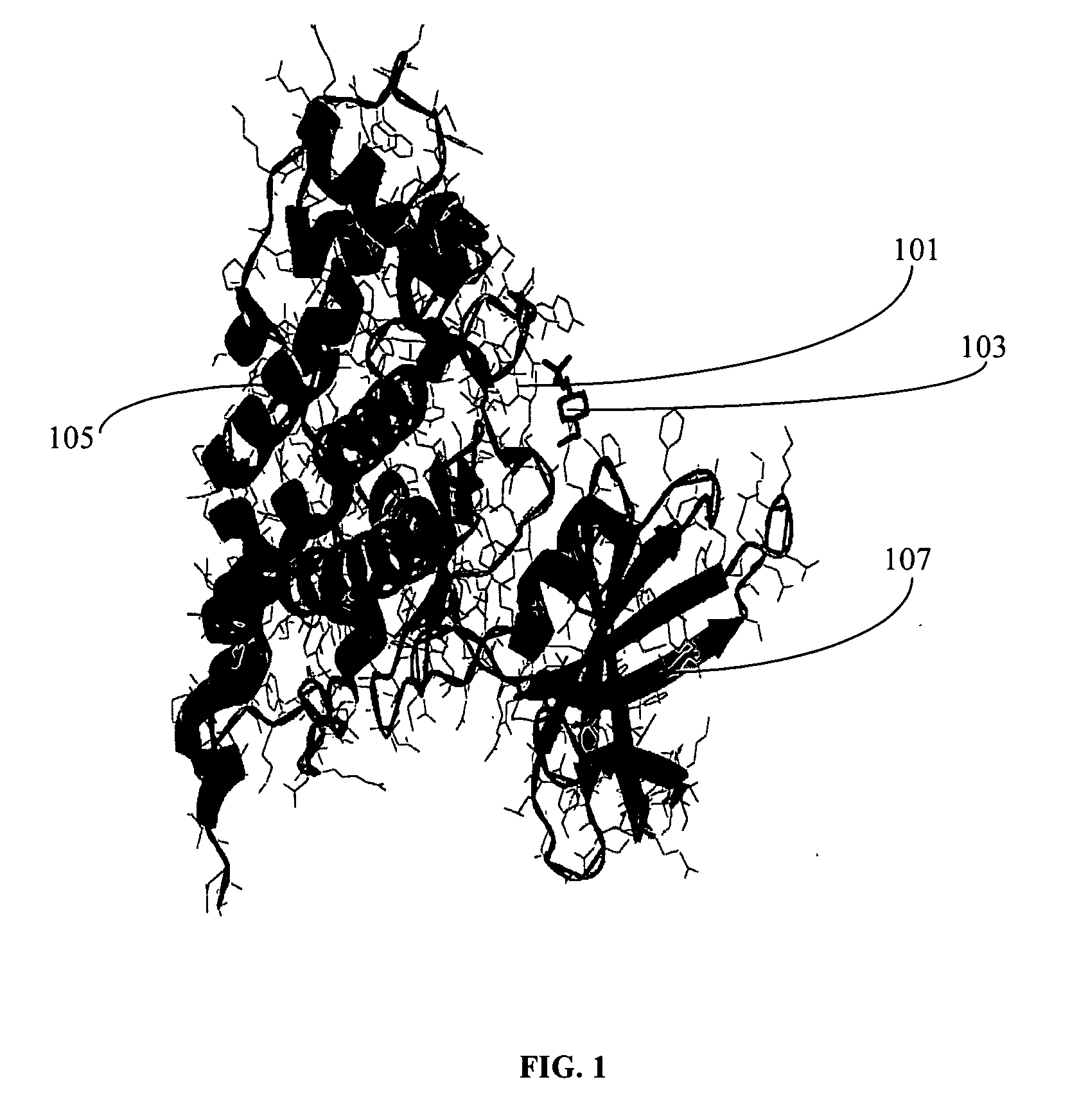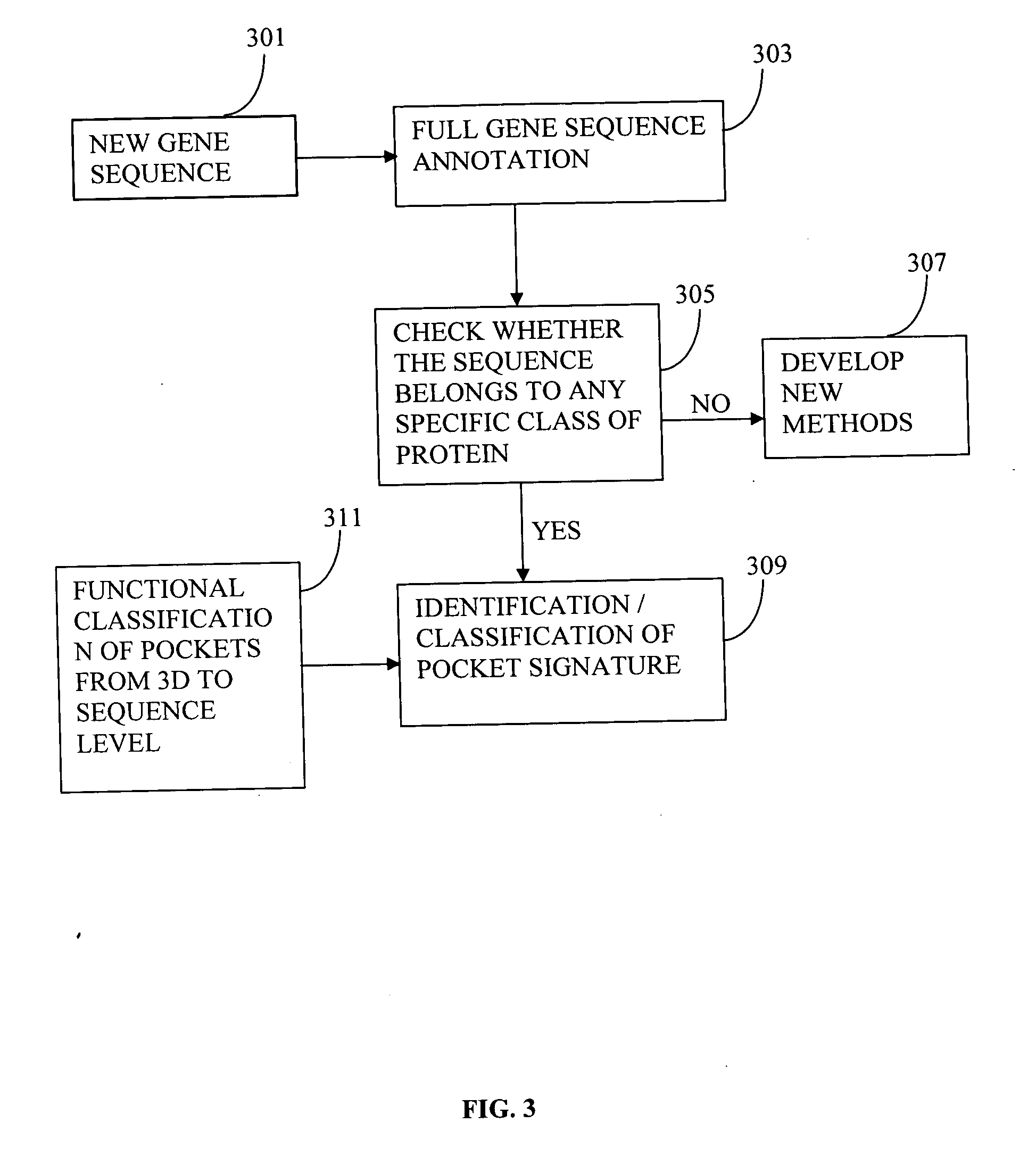Methods of clustering proteins
- Summary
- Abstract
- Description
- Claims
- Application Information
AI Technical Summary
Benefits of technology
Problems solved by technology
Method used
Image
Examples
example 1
[0110] The method of converting a reference DNA sequence to a predicted peptide sequence using GENSCAN is provided herein. The gene sequence having gene identification (gi) number (NCBI) 1431097 when submitted to GENSCAN server annotates the sequence to its corresponding sequence as shown below:
Gn. ExTypeS.Begin. . . End.LenFrPhI / AcDo / TCodRgP . . .Tscr . . .1.03Ply A—666161.051.02Term—15794801100223407890.83256.851.01Init—227718664120152413090.97419.32
[0111] Predicted Peptide Sequence(s): Give Details of Protein Database or EMBL Number.
>503_aaMTDVLRSLVRKISFNNSDNLQLKHKTSIQSNTALEKKKRKPDTIKKVSDVQVHHTVPNFNNSSEYINDIENLLISKLIDGGKEGIAVDHIEHANISDSKTDGKVANKHENISSKLSKEKVEKMINFDYRYIKTKERTSLVHKRVYKHDRKTDVDRKNHGGTIDISYPTTEVVGHGSFGVVVTTVIIETNQKVAIKKVLQDRRYKNRELETMKMLCHPNTVGLQYYFYEKDEEDEVYLNLVLDYMPQSLYQRLRHFVNLKMQMPRVEIKFYAYQLFK.ALNYLHNVPRICHRDIKPQNLLVDPTTFSFKICDFGSAKCLKPDQPNVSYICSRYYRAPELMFGATNYSNQVDVWSSACVIAELLLGKPLFSGESGIDQLVEIIKIMGIPTKDEISGMNPNYEDHVFPNIKPITLAEIFKAEDPDTLDLLTKTLKYHPCERLVPLQC...
example 2
[0112] The identification of pocket(s) or functional site(s) using the pocket information is described herein. It involves identification of pocket(s) or functional site(s) using the pocket information like residues in the active site from the database LIGPLOT of PDBSUM. The sequence of the protein having PDB id 1h8f in the PDBSUM exhibits two active site pockets (AC1, AC2) as shown in the FIG. 2.
example 3
[0113] The method of obtaining final structure conformation of the protein with respect to the sequence is explained herein. The final structural conformation is derived by either from the PDB or if it is new sequence it is being derived from a sequence alignment with that of the known structure which provides the summary of the protein with respect to its sequence. The information regarding its various feature are extracted from the PDB database including its sequence. In case of a new sequence the peptide chain is subjected to alignment using CLUSTALW and the conserved sequence identified. FIG. 2 is the pictorial representation of the structural conformation of a protein (PDB id 1H8F) which denotes the alpha helix (H1-H18), the beta sheets (A), loops (β), and residues in the active site pockets (AC1, AC2)
PUM
 Login to View More
Login to View More Abstract
Description
Claims
Application Information
 Login to View More
Login to View More - R&D
- Intellectual Property
- Life Sciences
- Materials
- Tech Scout
- Unparalleled Data Quality
- Higher Quality Content
- 60% Fewer Hallucinations
Browse by: Latest US Patents, China's latest patents, Technical Efficacy Thesaurus, Application Domain, Technology Topic, Popular Technical Reports.
© 2025 PatSnap. All rights reserved.Legal|Privacy policy|Modern Slavery Act Transparency Statement|Sitemap|About US| Contact US: help@patsnap.com



